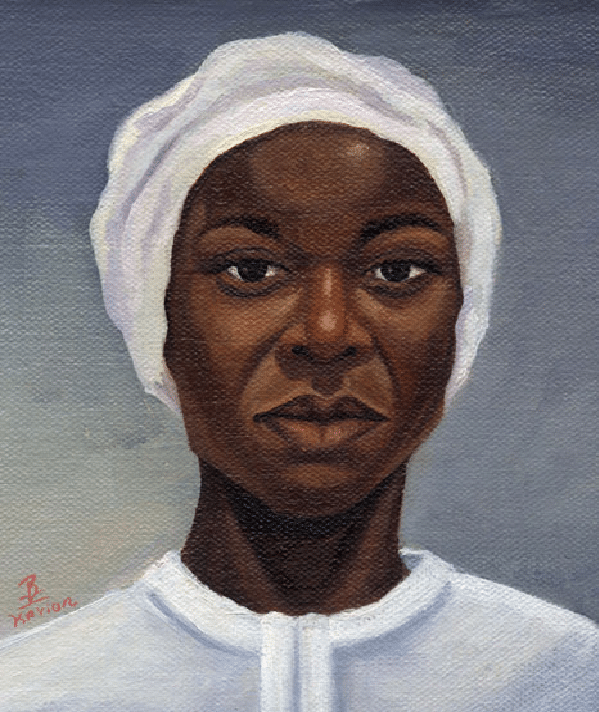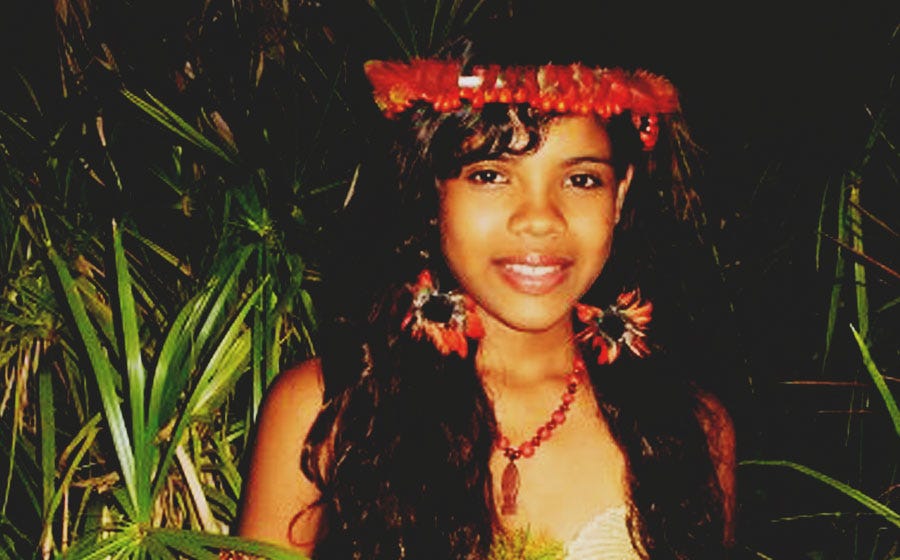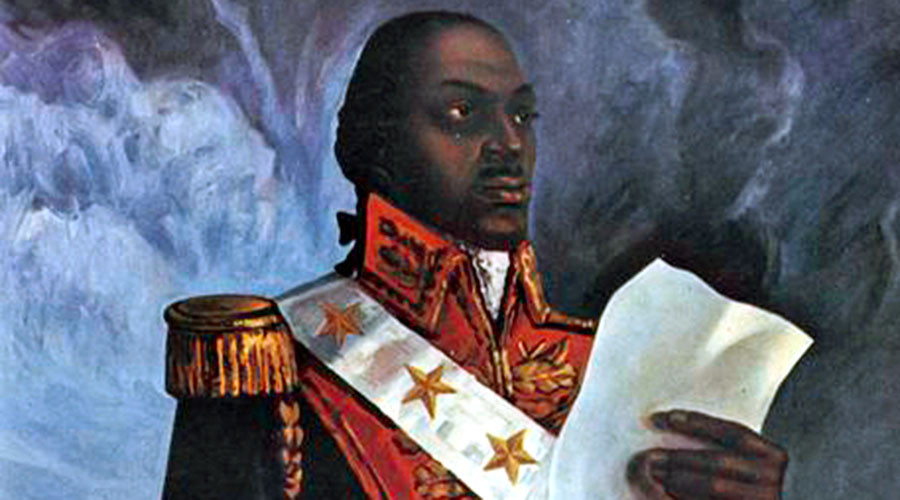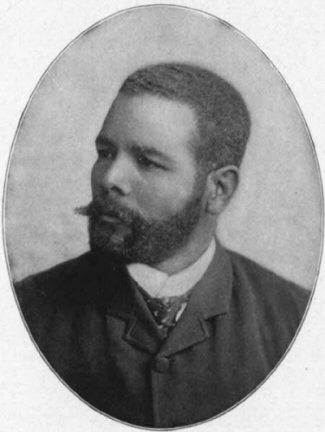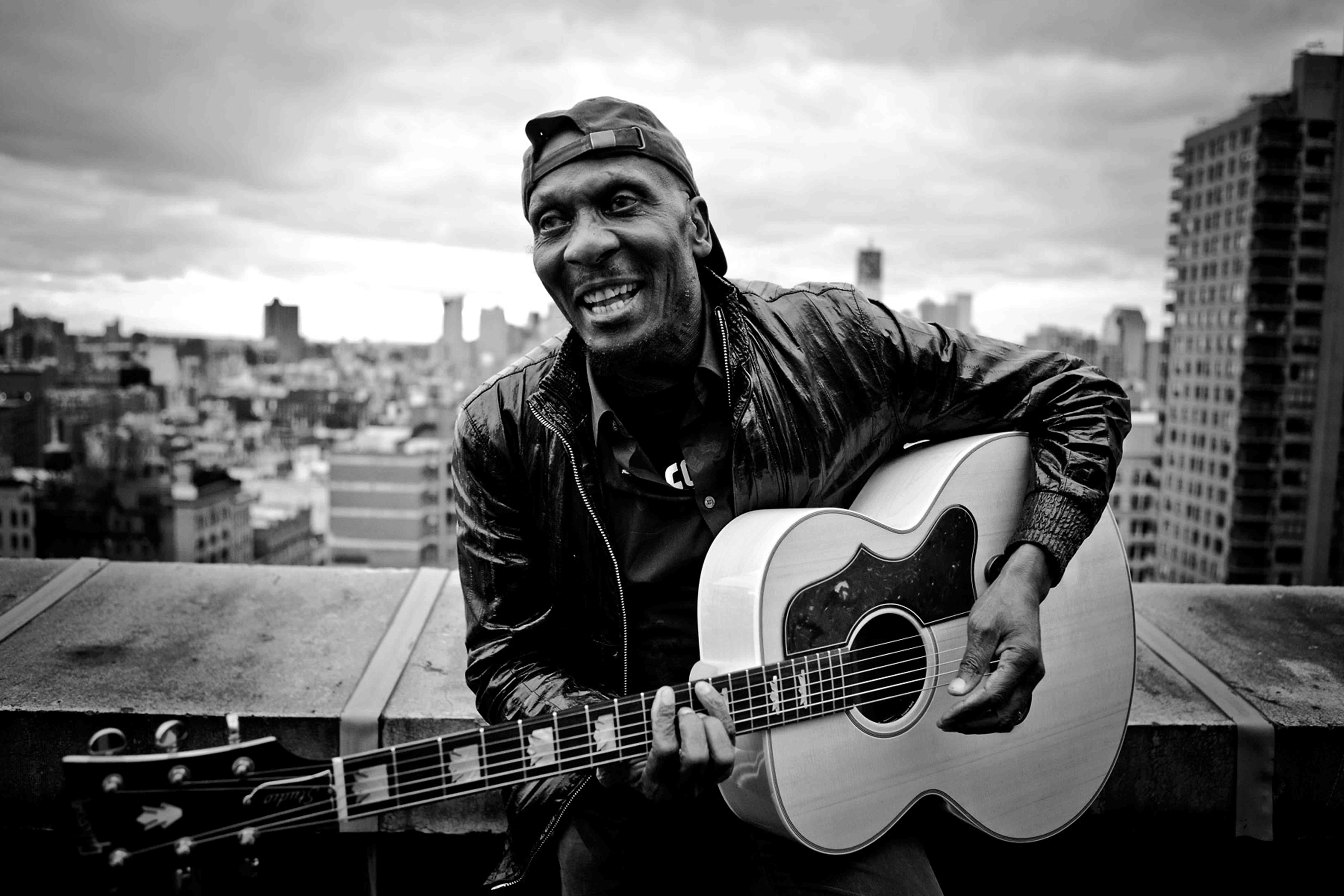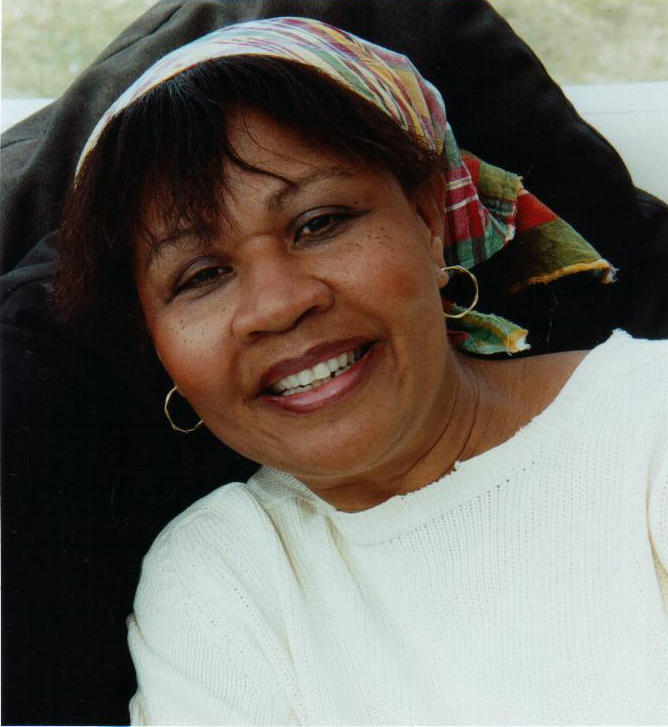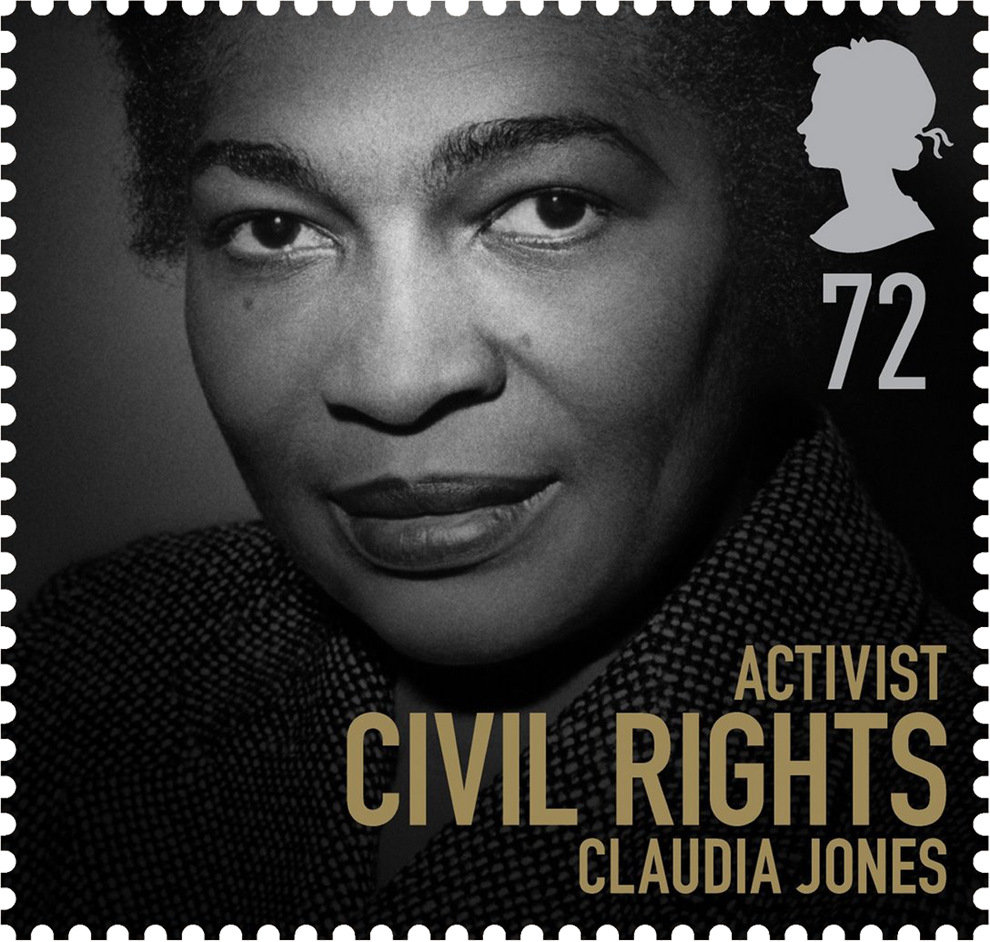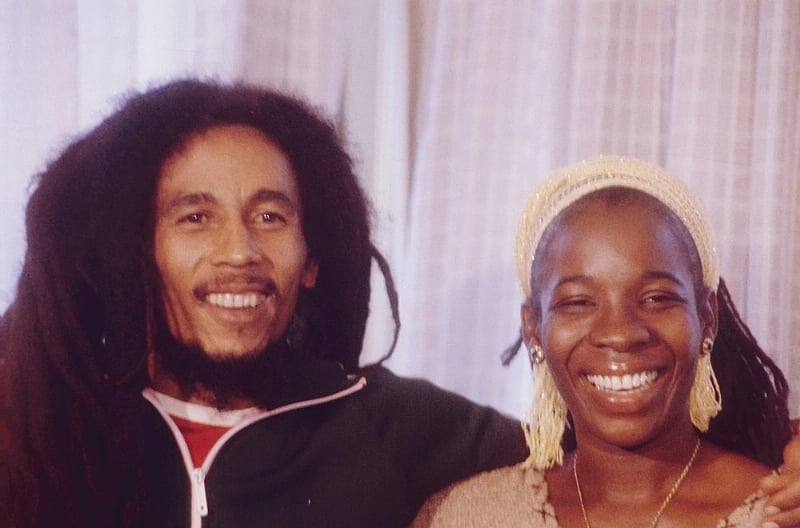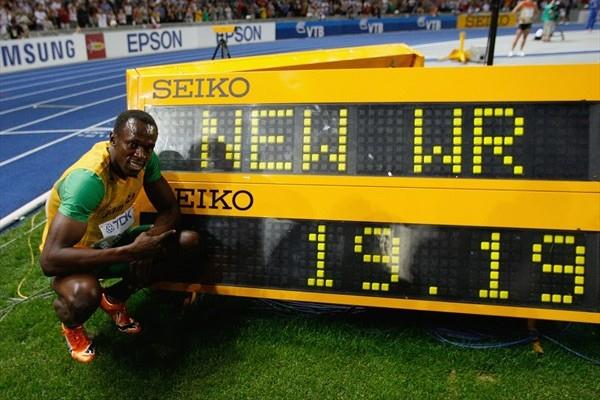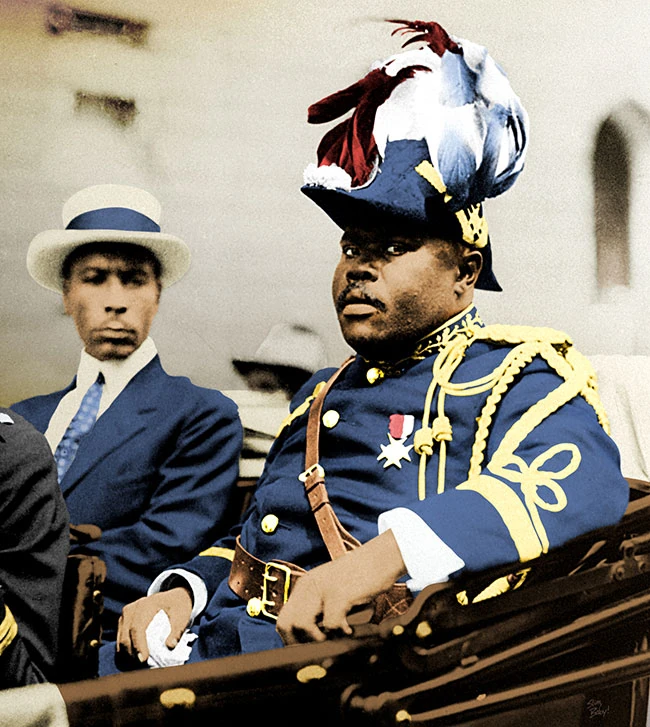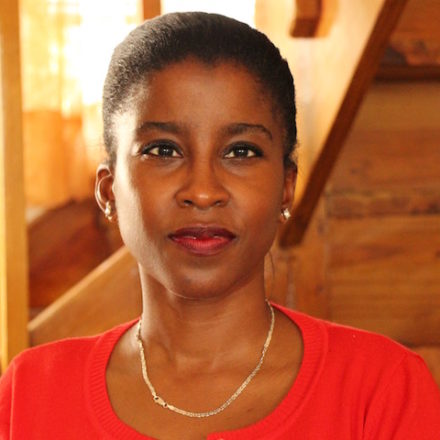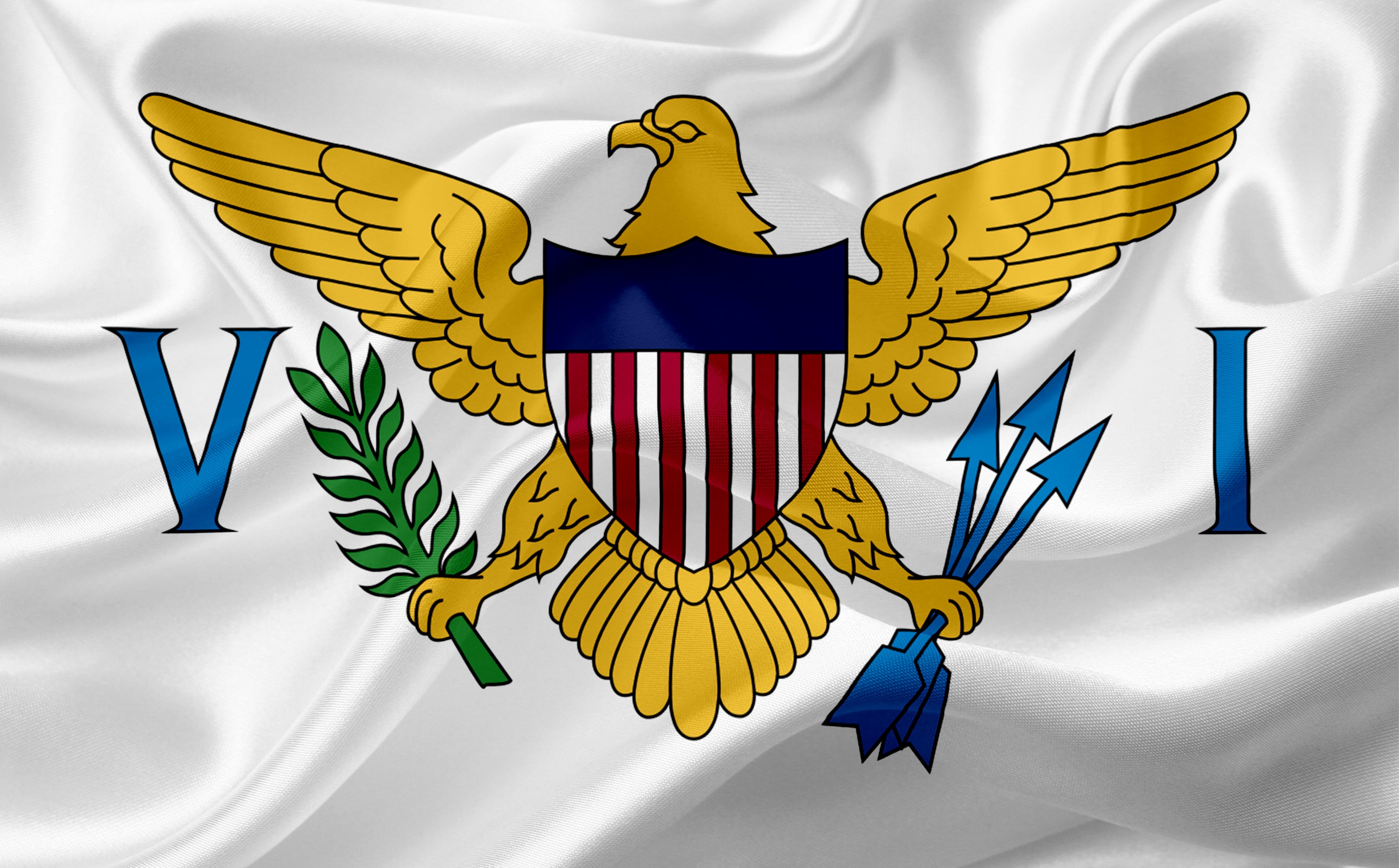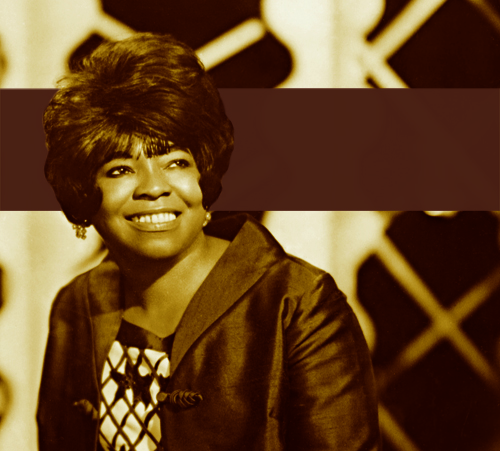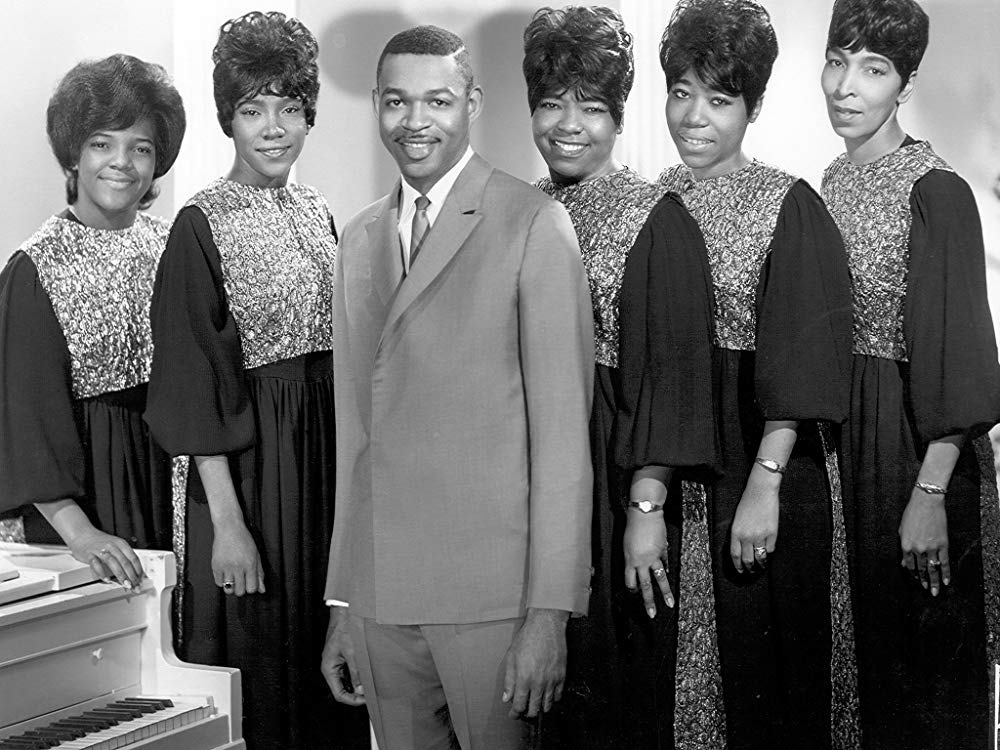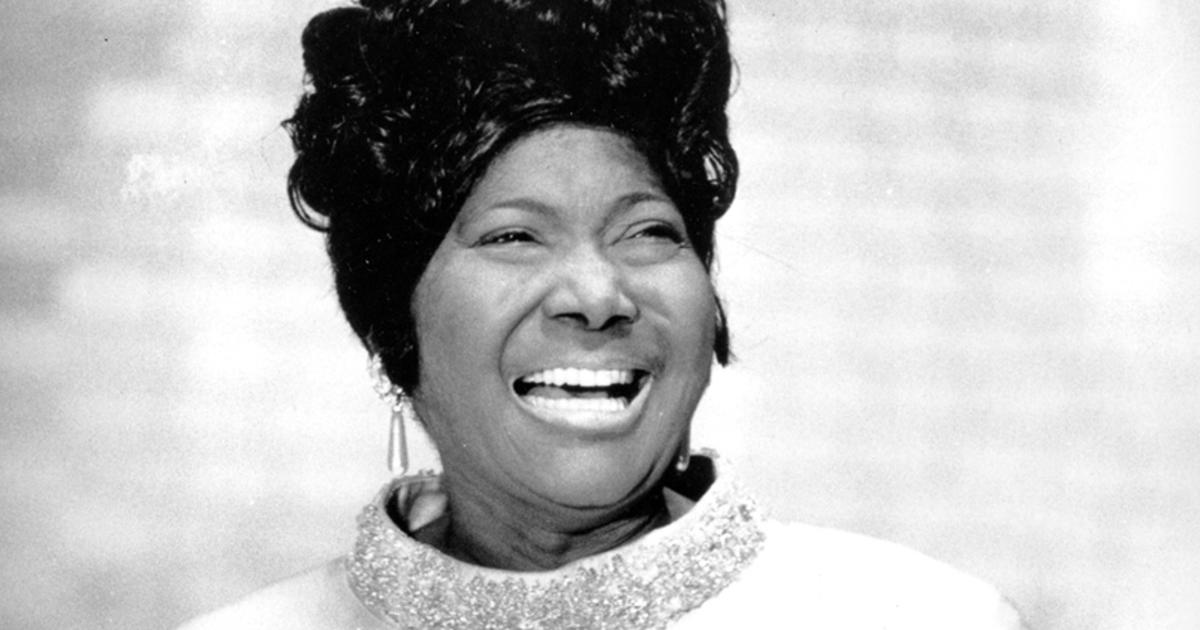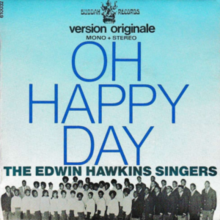“When I'm writing, I think about the garden, and when I'm in the garden I think about writing. I do a lot of writing by putting something in the ground.”
“I write out of defiance.”
-- Jamaica Kincaid
The Caribbean Experience
Many years ago, when I was in college, a great teacher taught me a whole lot of information on Caribbean history and culture. Today, tons of people have a great appreciation of the courage, creativity, and intellectual strength of Caribbean people. As an African American, I do realize the sacrifice of so many Afro-Caribbeans who supported us from Shirley Chisholm to Kwame Ture. Caribbean people represent a large section of the revolutionaries who desire an end to injustice filled with inspiring human beings like Touissant, Peter Tosh, Bob Marley, and Nanny of the Maroons. Caribbean culture helped to create hip hop, ska, reggae, and other genres of music. Years ago, I wrote about this subject before. Now, we witness a new generation in a new decade (in the 2020's), so it is time to show information on this important subject once again. Caribbean culture is very diverse. Caribbean people include black people, Latino people, those of Indian descent, other Asian people, Japanese human beings, biracial people, and multiracial people. Caribbean people are Christians, Hindus, Muslims, followers of Judaism, Rastafari, Buddhists, followers of traditional African religions, Sikhs, etc. The Caribbean stretches from South America to the U.S. Virgin Islands. Over 43 million people live in the Caribbean. Caribbean culture has diffused globally too. The Caribbean is more than about tourism. Caribbean people include a wide cultural reality of love of family, celebrations, and a realization that we are all this together. The Caribbean human beings always represents us basically.
The History of the Caribbean
The history of the Caribbean has a long history. In the beginning, the first human beings who lived in the Caribbean were Native Americans. By the start of the Holocene, the northern part of South America was occupied by groups of small game hunters, fishers, and foragers. These groups lived in semi-permanent camp site. Many of the had a wide spectrum of plant and animal resources among many habitats. There is archaeological evidence suggesting that Trinidad was the first Caribbean Island ot have been settled by human beings as early as 9,000 or 8,000 B.C. Yet, the first settlers were most likely came from South America via land bridges to Trinidad back then. Trinidad became an island due to a jump of sea level by about 60m. by ca. 7,000/6,000 B.C. Climate change may have caused the increase of the level of sea level. Trinidad was the only Caribbean island that could have been colonized by indigenous people from the South American mainland by not traversing hundreds of thousands of miles of open sea. The earliest major habitation sites discovered in Trinidad are the shell midden deposits of Banwari Trace and St. John, which have been dated between 6000 and 5100 B.C. Both shell middens represent extended deposits of discarded shells that originally yielded a food source and stone and bone tools. They are considered to belong to the Ortoiroid archaeological tradition, named after the similar but much more recent Ortoire site in Mayaro, Trinidad. Most of the Caribbean island were settled between 3500 and 3000 B.C. during the Archaic Age. There are archaeological sites of the period being located at Barbados, Cuba, Curaçao and St. Martin, followed closely by Hispaniola and Puerto Rico. This settlement phase is often attributed to the Ortoiroid culture.
Between 800 and 200 B.C. a new migratory group expanded through the Caribbean island: the Saladoid. This group is named after the Saladero site in Venezuela, where their distinctive pottery (typically distinguished by white-on-red painted designs) was first identified.The introduction of pottery and plant domestication to the Caribbean is often attributed to Saladoid groups and represents the beginning of the Ceramic Age. However, recent studies have revealed that crops and pottery were already present in some Archaic Caribbean populations before the arrival of the Saladoid.
Jamaica was settled by 600 A.D. The Cayman Islands was settlement long after 600 A.D. One initial impetus of movement from the mainland to the northern Antilles may have been the search for high quality materials such as flint. Flinty Bay on Antigua, is one of the best known sources of high quality flint in the Lesser Antilles. The presence of flint from Antigua on many other Caribbean Islands highlights the importance of this material during the Pre-Columbian period. From 650-800 A.D., there was many cultural, socio political and ritual reformulations. It took place on the mainland and in many Caribbean islands. Caribbean populations grew by the post-Saladoid period. The Greater Antillean society developed even more by 1200 A.D.
At the time of the European arrival, three major Amerindian indigenous peoples lived on the islands: the Taíno (sometimes also referred to as Arawak) in the Greater Antilles, the Bahamas and the Leeward Islands; the Island Caribs and Galibi in the Windward Islands; and the Ciboney in western Cuba. The Taínos are subdivided into Classic Taínos, who occupied Hispaniola and Puerto Rico, Western Taínos, who occupied Cuba, Jamaica, and the Bahamian archipelago, and the Eastern Taínos, who occupied the Leeward Islands. Trinidad was inhabited by both Carib speaking and Arawak-speaking groups. DNA studies changed some of the traditional beliefs about pre-Columbian indigenous history. In 2003, Juan Martinez Cruzado, a geneticist from the University of Puerto Rico at Mayagüez designed an island-wide DNA survey of Puerto Rico's people. According to conventional historical belief, Puerto Ricans have mainly Spanish ethnic origins, with some African ancestry, and distant and less significant indigenous ancestry. Cruzado's research revealed that 61% of all Puerto Ricans have Amerindian mitochondrial DNA, 27% have African and 12% Caucasian. According to National Geographic, "Among the surprising findings is that most of the Caribbean’s original inhabitants may have been wiped out by South American newcomers a thousand years before the Spanish invasion that began in 1492. Moreover, indigenous populations of islands like Puerto Rico and Hispaniola were likely far smaller at the time of the Spanish arrival than previously thought."
Later, there were the voyages of Christopher Columbus to the Americas. There were Portuguese and Spanish ships going into Central and South America. These colonies brought in gold to Europe from the Americas. Other European powers like the English, the Dutch, and the French also created colonies to seek profit. This sparked imperial rivalries that made the Caribbean a contested area during European wars for centuries. In the Spanish American wars of independence in the early nineteenth century, most of Spanish America broke away from the Spanish Empire, but Cuba and Puerto Rico remained under the Spanish crown until the Spanish–American War of 1898. During the first voyage of the explorer of Columbus, he made contact with the Lucayans in the Bahamas and the Taino in Cuba including the northern coast of Hispaniola. Many Native Americans were taken back to Spain. Columbus and his crew oppressed Native Americans in the Caribbean via murder, rape, and other forms of oppression. Significant amounts of gold were found in their personal ornaments and other objects such as masks and belts enticing the Spanish search for wealth. To supplement the Amerindian labor, the Spanish imported African slaves. Although Spain claimed the entire Caribbean, they settled only the larger islands of Hispaniola (1493), Puerto Rico (1508), Jamaica (1509), Cuba (1511), and Trinidad (1530) and the small 'pearl islands' of Cubagua and Margarita off the Venezuelan coast because of their valuable pearl beds, which were worked extensively between 1508 and 1530.
Other European powers came into the Caribbean after the Spanish Empire declined. The Spanish Empire declined in power in part due to the native population of the area decreasing via European diseases. The Dutch, the French, and the British traveled into the region. They had a long term presence via colonialism and imperialism. They brought millions of black slaves kidnapped from Africa to support the tropical plantation system that spread among the Caribbean islands. Many European privates were in the region like Francis Drake. He attacked many Spanish settlements. He captured the Spanish Silver Train at Nombre de Dion on March 1573. The British colonized Bermuda at 1612. British West Indian colonization began with Saint Kitts in 1623 and Barbados in 1627. The former was used as a base for British colonization of neighboring Nevis (1628), Antigua (1632), Montserrat (1632), Anguilla (1650) and Tortola (1672). French colonization too began on St. Kitts, the British and the French splitting the island among themselves in 1625. It was used as a base to colonize the much larger Guadeloupe (1635) and Martinique (1635), St. Martin (1648), St. Barts (1648), and St Croix (1650), but was lost completely to Britain in 1713. From Martinique the French colonized St. Lucia (1643), Grenada (1649), Dominica (1715), and St. Vincent (1719). The British admiral William Penn seized Jamaica in 1655, and it remained under British rule for over 300 years.
Piracy in the Caribbean was widespread during the early colonial era, especially between 1640 and 1680. The term "buccaneer" is often used to describe a pirate operating in this region. In 1625, French buccaneers established a settlement on Tortuga, just to the north of Hispaniola, that the Spanish were never able to permanently destroy despite several attempts. The settlement on Tortuga was officially established in 1659 under the commission of King Louis XIV. In 1670 Cap François (later Cap Français, now Cap-Haïtien) was established on the mainland of Hispaniola. Under the 1697 Treaty of Ryswick, Spain officially ceded the western third of Hispaniola to France. The Dutch took over Saba, Saint Martin, Sint Eustatius, Curaçao, Bonaire, Aruba, Tobago, St. Croix, Tortola, Anegada, Virgin Gorda, Anguilla and a short time Puerto Rico, together called the Dutch West Indies, in the 17th century. Denmark-Norway first ruled part, then all of the present U.S. Virgin Islands since 1672, Denmark sold sovereignty over the Danish West Indies in 1917 to the United States, which still administers them.
By the 1600's, France and Spain competed for control over the Caribbean. Many European nations fought for rule of the European continent too. France and Spain were known rivals. These political and religious tensions increased after 1516. This was when the kingdoms of Castile, Leon, and Aragon were unified under Charles I of Spain. These kingdoms were expanding their domains after Charles I's election as Holy Roman Emperor and began to surround France. In 1521, France went to war with the Holy Roman Empire. Spanish troops routed French armies in France, the Italian Peninsula, and elsewhere, forcing the French Crown to surrender in 1526 and again in 1529. The Italian Wars, as the French-Spanish wars came to be known, reignited in 1536 and again in 1542. Intermittent warring between the Valois monarchy and the Habsburg Empire continued until 1559. French corsair attacks began in the early 1520s, as soon as France declared war on Spain in 1521. At the time, prodigious treasures from Mexico began to cross the Atlantic en route to Spain. French monarch Francis I challenged Spain's exclusivist claims to the New World and its wealth, demanding to see "the clause in Adam’s will which excluded me from my share when the world was being divided."
Giovanni da Verrazzano (aka Jean Florin) led the first recorded French corsair attack against Spanish vessels carrying treasures from the New World. In 1523, off the Cape of St. Vincent, Portugal, his vessels captured two Spanish ships laden with a fabulous treasure consisting of 70,000 ducats worth of gold, large quantities of silver and pearls, and 25,000 pounds of sugar, a much-treasured commodity at the time. In 1528, a French cosiar vessel sacked the village of San German near Santo Domingo. Most corsairs were Protestant Hugenots. They attacked Spanish vessels. In 1536, France and Spain went to war again. A peace happened and war started against in 1542. One French corsair killed 200 Spanish settlers. England sided with Spain. This ended by Queen Elizabeth I's time in 1558. Queen Elizabeth aided the Huguenot forces in France and endorsed the Dutch insurrection.
War happened in 1585 when the English Crown used over 7,000 troops to the Netherlands. British pirates attack Spain's Caribbean areas and vessels. Tensions further intensified in 1587, when Elizabeth I ordered the execution of Catholic Mary Queen of Scots after twenty years of captivity and gave the order for a preemptive attack against the Spanish Armada stationed in Cadiz. In retaliation, Spain organised the famous naval attack that ended tragically for Spain with the destruction of the "invincible" Armada in 1588. Spain rebuilt its naval forces, largely with galleons built in Havana, and continued to fight England until Elizabeth's death in 1603. Spain, however, had received a near-fatal blow that ended its standing as Europe's most powerful nation and virtually undisputed master of the Indies. John Hawkins, John Oxenham, and Francis Drake were smuggling African slaves into Spain's Caribbean possession in exchange for tropical products. The first instances of English mercantile piracy took place in 1562–63, when Hawkins’ men raided a Portuguese vessel off the coast of Sierra Leone, captured the 300 slaves on board, and smuggled them into Santo Domingo in exchange for sugar, hides, and precious woods. Hawkins and his contemporaries mastered the devilish art of maximizing the number of slaves that could fit into a ship. Queen Elizabeth I worked with Hawkins to promote slavery. Oxenham was burned alive for heresy by the Catholic Inquisition. Drake terrorized Spanish vessels and ports. Early in 1586, his forces seized Santo Domingo, retaining control over it for around a month. Before departing they plundered and destroyed the city, taking a huge bounty. Drake's men destroyed church images and ornaments and even erected a defensive palisade with wooden images of saints in the hope that the Spanish soldiers’ Catholic fervor would keep them from firing saints as human shields of sorts.
The Europeans used slavery to promote agriculture in the Caribbean. African human beings were kidnapped and forced to work against their wills by the British, the Dutch, the French, the Portuguese, and the Spanish in the Americas including the Caribbean. Slaves were brought into the Caribbean from the early 1500's to the end of the 1800's.The majority of slaves were brought to the Caribbean colonies between 1701 and 1810. Also in 1816 there was a slave revolution in the colony of Barbados. Millions of African people were slaves in the Caribbean.
Abolitionists in the Americas and in Europe became vocal opponents of the slave trade throughout the 19th century. The importation of slaves to the colonies was often outlawed years before the end of the institution of slavery itself. It was well into the 19th century before many slaves in the Caribbean were legally free. The trade in slaves was abolished in the British Empire through the Abolition of the Slave Trade Act in 1807. Men, women and children who were already enslaved in the British Empire remained slaves, however, until Britain passed the Slavery Abolition Act in 1833. When the Slavery Abolition Act came into force in 1834, roughly 700,000 slaves in the British West Indies immediately became free; other enslaved workers were freed several years later after a period of forced apprenticeship. Slavery was abolished in the Dutch Empire in 1814. Spain abolished slavery in its empire in 1811, with the exceptions of Cuba, Puerto Rico, and Santo Domingo; Spain ended the slave trade to these colonies in 1817, after being paid £400,000 by Britain. Slavery itself was not abolished in Cuba until 1886. France abolished slavery in its colonies in 1848.
Some plantation ruined families who were slaves in order to disrupt the domestic life of people in slavery. Slaves could be sold, so that the spouses would be sold separately. Some policies changed. Many people rebelled in Jamaica, Haiti, and other places. Rebellious slaves were murdered by torture, bodies would be mutilated, etc. Slaves had no rights. Only the consent of the master in British laws would cause freedom for slaves. Many freed person didn't have the right to own property, vote, hold office, or even enter some trades. The French Empire regulated slaves under the Code Noir (Black Code) which was in force throughout the empire, but which was based upon French practices in the Caribbean colonies. French law recognized slave marriages, but only with the consent of the master. French law, like Spanish law, gave legal recognition to marriages between European men and black or Creole women. French and Spanish laws were also significantly more lenient than British law in recognizing manumission, or the ability of a slave to purchase their freedom and become a "freeman". Under French law, free slaves gained full rights to citizenship. The French also extended limited legal rights to slaves, for example the right to own property, and the right to enter contracts. The Spanish conquistadors used encomienda to exploit Native Americans. Sugar was the British's largest import by the 18th century.
In the Caribbean, sugar cane was huge. After slaves were emancipated in the British Empire by 1833, the British Empire used people form China and India to work for cheap wages in dealing with the sugar cane industries. The first ships carrying indentured laborers for sugarcane plantations left India in 1836. Over the next 70 years, numerous more ships brought indentured laborers to the Caribbean, as cheap and docile labor for harsh inhumane work. The slave labor and indentured labor - both in millions of people - were brought into Caribbean, as in other European colonies throughout the world, This is why many people in the Caribbean have some Indian and Chinese descent. Later, the European imperialists used embargoes and other tactics to prevent some Caribbean areas to develop independently from the colonialists.
The Caribbean saw many wars like the Seven Years' War, the War of Jenkin's Ear, and the American Revolutionary War. American independence was assured by French naval victories in the Caribbean, but all the British islands that were captured by the French were returned to Britain at the end of the war. Haiti became free after the end of the French Revolutionary War. In addition, in the Treaty of Amiens in 1802, Spain ceded Trinidad to Britain. After the Napoleonic War in 1814, France ceded Saint Lucia to Britain. The Spanish–American War ended Spanish control of Cuba (which soon became independent) and Puerto Rico (which became a US colony), and heralded the period of American dominance of the islands. Slave rebellions were common in the Caribbean. Communities of people called the Maroons worked together to fight in the mountainous areas of the Greater Antilles and some of the islands of the Lesser Antilles.
The spread of the plantations and European settlement often meant the end of many Maroon communities, although they survived on Saint Vincent and Dominica, and in the more remote mountainous areas of Jamaica, Hispaniola, Guadeloupe and Cuba. Jamaica, Cuba, and Haiti had large rebellions. In 1804, Haiti was free from French imperialism. Saint Domingue on Hispaniola was the name of the French colony in Haiti. This followed 13 years of war that started as a slave uprising in 1791 and quickly turned into the Haitian Revolution under the leadership of Toussaint L'Ouverture, where the former slaves defeated the French army (twice), the Spanish army, and the British army, before becoming the world's first and oldest black republic, and also the second-oldest republic in the Western Hemisphere after the United States. This is additionally notable as being the only successful slave uprising in history. The remaining two-thirds of Hispaniola were conquered by Haitian forces in 1821. In 1844, the newly formed Dominican Republic declared its independence from Haiti.
The nations bordering the Caribbean in Central America gained independence with the 1821 establishment of the First Mexican Empire—which at that time included the modern states of Mexico, Guatemala, El Salvador, Honduras, Nicaragua, and Costa Rica. The nations bordering the Caribbean in South America also gained independence from Spain in 1821 with the establishment of Gran Colombia—which comprised the modern states of Venezuela, Colombia, Ecuador, and Panama.Cuba and Puerto Rico were Spanish colonies until the 1898 Spanish American War. Cuba had independence by 1902, and Puerto Rico is now an unincorproated. Between 1958 and 1962 most of the British-controlled Caribbean was integrated as the new territory of the USA. It was the last of the Greater Antilles under colonial control. West Indies Federation in an attempt to create a single unified future independent state—but it failed. The following former British Caribbean island colonies achieved independence in their own right; Jamaica (1962), Trinidad and Tobago (1962), Barbados (1966), Bahamas (1973), Grenada (1974), Dominica (1978), St. Lucia (1979), St. Vincent (1979), Antigua and Barbuda (1981), St. Kitts and Nevis (1983).
In addition British Honduras in Central America became independent as Belize (1981), British Guiana in South America became independent as Guyana (1966), and Dutch Guiana also in South America became independent as Suriname (1975). Even in the 21st century, not all Caribbean islands are independent nations. Many have ties to European countries or to the USA. French overseas departments and territories include several Caribbean islands. Guadeloupe and Martinique are French overseas regions, a legal status that they have had since 1946. Their citizens are considered full French citizens with the same legal rights. In 2003, the populations of St. Martin and St. Barthélemy voted in favor of secession from Guadeloupe in order to form separate overseas collectivities of France. After a bill was passed in the French Parliament, the new status took effect on February 22, 2007.
Puerto Rico and the U.S. Virgin Islands are officially territories of the United States, but are sometimes referred to as "protectorates" of the United States. They are self governing territories subject to Congress plenary powers over the territories. The British have overseas territories at Anguilla, Bermuda, the British Virgin Islands, the Cayman Islands, Montserrat, and Turks and Caicos. Aruba, Curaçao, and Sint Maarten are all presently separate constituent countries, formerly part of the Netherlands Antilles. Along with Netherlands, they form the four constituent countries of the Kingdom of the Netherlands. Citizens of these islands have full Dutch citizenship.
America have a complicated relationship with the Caribbean. Long ago, President James Monroe promoted the Monroe Doctrine. This is later represented by the Roosevelt Corollary. This means that America has the right to intervene in any nation of the Western Hemisphere if it is determined to be engaged in under certain circumstances. The new expansion is a slick form of imperialism plain and simple.
Victory in the Spanish–American War and the signing of the Platt amendment in 1901 ensured that the United States would claim the right to interfere in Cuban political and economic affairs, militarily if necessary. After the Cuban revolution of 1959 relations deteriorated rapidly leading to the Bay of Pigs Invasion, the Cuban Missile Crisis and successive US attempts to destabilize the island. The US invaded and occupied Hispaniola (present day Dominican Republic and Haiti) for 19 years (1915–34), subsequently dominating the Haitian economy through aid and loan repayments. The United States invaded Haiti again in 1994 and in 2004 were accused by CARICOM of arranging a coup d'état to remove elected Haitian leader Jean-Bertrand Aristide.
In 1965, 23,000 U.S. troops landed in the Dominican Republic to quash a military coup in what was the first U.S. military intervention in Latin America in more than 30 years. President Lyndon Johnson had ordered the invasion to stem what he claimed to be a "Communist threat", but the mission appeared ambiguous and was condemned throughout the hemisphere as a return to gunboat diplomacy. In 1983 the United States invaded Grenada to remove popular and charismatic left-wing leader Maurice Bishop. The United States maintains a naval military base in Cuba at Guantanamo Bay. The base is one of five unified commands whose "area of responsibility" is Latin America and the Caribbean. The command is headquartered in Miami, Florida. America wanted to be a primary market of the export of Caribbean goods. The Caribbean Basin Initiative promotes this alliance between American and Caribbean markets. This trade dealt with cargo, crude oil, and other resources. The Caribbean sugar markets declined by the 20th century, and tourism grew. For years, there was the increase of hospitals, universities, water supplies, etc. Literacy increased along with life expectancy.
There were neo-colonial interests like the U.S. owned United Fruit Company. Much of the tourism industry in the Caribbean was racist. The United Fruit Company also developed hotels for tourist accommodations. It soon became apparent, however, that this industry was much like a new form of colonialism; the hotels operated by the company were fully staffed by Americans, from chefs to waitresses, in addition to being owned by Americans, so that the local populations saw little economic benefit. The company also enforced racial discrimination in many policies for its fleet. Black passengers were assigned to inferior cabins, were sometimes denied bookings, and were expected to eat meals early before white passengers. The most popular early destinations were Jamaica and the Bahamas; the Bahamas remains today the most popular tourist destination in the Caribbean. Cruise ships, banks ,and ports are commonplace in the Caribbean now.
Caribbean Culture
Caribbean culture is all about diversity. The art, music, literature, culinary, politics, and social elements of the Caribbean is global also not just confined to a region. So many of the legends that we celebrate today in our generation and during the past are from the Caribbean. Caribbean culture had spread into America, Canada, Africa, Europe, Latin America, and all over the world in other locations too. Caribbean culture has been developed by history, geography, and human development. Multicultural heritages of Africa, Native Americans, Europeans (Spanish came first, then the French, and then the English), Latino people, Indian people, Chinese people, and other groups of people make the Caribbean culture as expansive as it is. Back in 1492, Spain conquered much of the Caribbean, then British conquests reached into a higher level by 1759, and then French and Dutch people came into the region. Although officially a quarter of the Caribbean population is English-speaking, the largest linguistic group comprises Spanish speakers (due to the inclusion of mainland Caribbean states), some 22% speak French while only 1% speak Dutch. Though the Caribbean today features 59 living languages these are not spoken in the "insular Caribbean", but on what is referred to as the "continental Caribbean." Many Caribbean people speak French too. There is a strong Chinese element of culture in Trinidad and other places. A strong Indian element of culture is found in Trinidad and Tobago, Guyana, Suriname, Jamaica, and other lands of the Caribbean. We know of the black African cultural influences in the Caribbean spanning long centuries.
From leaders like Touissant to modern day heroes, black people in the Caribbean have made huge contributions in the world atmosphere. Symbols of the Caribbean are the parrot, palm, and the shell. Women artists of the Caribbean: El vendedor de andullo (Tobacco Vendor), 1938, by modernist Celeste Woss y Gil of the Dominican Republic, and an oil painting entitled Marpacífico (Hibiscus-Marpacífico is the name used in Cuba for the hibiscus flower), 1943, by Cuban modernist Amelia Peláez are prominent. There have even been a rare selection of prints by Haitian artists such as Castera Bazile, Wilson Bigaud, Dieudonné Cedor, Jacques-Enguerrand Gourgue and Gabriel Lévêque, that have not been exhibited since they were part of a traveling exhibition in 1948.
Caribbean literature has been written in English, French, Spanish, and a creole language. Caribbean authors have won numerous awards. Mark McWatt won Best First Book Award (2006) and Commonwealth Writers' Prize for Suspended Sentences: Fictions of Atonement. Sir V. S. Naipaul won the Man Booker Prize (1971), the Trinity Cross of Trinidad and Tobago, and the Nobel Prize in Literature (2001). Derek Walcott also won the Nobel Prize (1992). One of the biggest parts of Caribbean culture is the Carnival. It is annual celebration of life, music, dance, and togetherness among human beings. People wear costumes, be creative, dance, and have fun. Traditionally, most Caribbean islands celebrate carnival on Ash Wednesday or the days leading up to Lent. Barbados celebrates the delivery of the last Sugar Canes called 'Crop Over' better known as the 'Sweetest Summer Festival' which is held in August. Carnival has been celebrated in New York City, Miami, Toronto, London, and other places of the world. Caribbean music can be reggae, the Indo-Caribbean musical form of Chutney, and other genres. Film, television, and theater have been elaborately displayed in the Caribbean region as well. Basketball, soccer, track, boxing, racing, cycling, golf, hiking, horse racing, wrestling, tennis, triathlon, and other sports are common in the Caribbean including baseball. The Caribbean Awards Sports Icons (CASI) are based on accomplishments made over the last 60 years (1948–2008), for those who have made their mark in the various fields of sports. Great achievements in Caribbean sport are recognized by Caribbean's Sports Hall of Fame, while trophies are awarded annually to top athletes by a panel of journalists. From food to other aspects of culture, Caribbean human beings have always been a blessing to the overall human family.
The Music of the Caribbean
The music of the Caribbean has inspired the imagination of the world. Caribbean music has motivated the soul for a long time too. One thing about the Caribbean is about multicultural influences. Every region of the Caribbean has been a huge foundation of specialized music. From fun records to more serious music, Caribbean music is very blessed. People from around the world knows about reggae which is Jamaica's best known style of music. It has roots form mento music, ska, and rocksteady. It has the one drop rhythm and has conscious and spiritual lyrics. Other reggae songs have lyrics about romance and love too. Bob Marley, Peter Tosh, Lee Perry, Jimmy Cliff, Burning Spear, Maxi Priest, and other artists expanded reggae worldwide. Patra, I Wayne, Empress Minott, Tessanne Chin, Sean Paul, Damian Marley, Ziggy Marley, Shaggy, and other new school reggae artists are prominent now. Ska is a music genre that originated in Jamaica in the late 1950's, and was the precursor to rocksteady and reggae. Ska combined elements of Caribbean mento and calypso with American jazz and rhythm and blues. It is characterized by a walking bass line accented with rhythms on the upbeat. Calypso came from the islands of Trinidad and Tobago. It was popularized in America by people like Harry Belafonte. Soca, Chutney, and rapso are musical styles popular in the Caribbean too. Compas is found in Haiti. Like basically all other Caribbean music, compas is a blend of African rhythms with the music of the Native Caribbean people and European musical elements. Some of the more popular current artists include Tabou Combo, Les Freres Dejean and Sweet Micky, who ran for and won the Haitian presidency in 2011.
Other styles you'll find in Haiti include rara, mizik rasin, kadans and meringue (which is related to the merengue music of the Dominican Republic, which shares the island of Hispaniola with Haiti). Salsa music came from Cuba. It is popular in cities of America, and other places. Clubs with salsa music is commonplace in NYC, Miami, LA, Chicago, etc. Salsa used fast, elaborate dance moves, and creative music. Bachata is found in the Dominican Republic. It has roots form Iberian guitar music. It has pop appeal too. Large Dominican populations in American cities celebrate bachata. Caribbean music has been influenced by African, European, Chinese, Indian, and Indigenous musical traditions. Other styles of the Caribbean music include merenque, palo, mombo, denbo, baithak gana, bouyon, cadence-lypso, chutney-soca, dancehall, jing ping, parang, pichakaree, punta, ragga, reggaeton, soca, and zouk. Caribbean is also related to Central American and South American music. As such, most Caribbean music, however unique to its own island culture, includes elements of African music - heavy use of percussion instruments, complex rhythmic patterns, and call-and-response vocals. That said, it's important to recognize the musical styles unique to each island. In many cases, the difference between one style and another comes down to the rhythms utilized in each music; there is almost a different rhythm for every island. Bari is a festival, dance, drum and song type from the Dutch Antillean island of Bonaire. It is led by a single singer, who improvises. Lyrics often concern local figures and events of importance. Careso is a Virgin Islander song form, which is now entirely performed for special holiday and appreciation or education events, by folkloric ensembles. It is similar to quelbe in some ways, but has more sustained syllables, a more African melodic style and an all female, call and response format with lyrics that function as news and gossip communicator, also commemorating and celebrating historical events.
Prominent People of the Caribbean
There are tons of prominent Caribbean people who made a huge difference in world history. One great Caribbean person that I have known about for years is Jamaica Kincaid. She is an Antiguan-American novelist, essayist, gardener, and gardener writer. She was born in St. John's Antigua and Barbuda. She made literature that talked about the experiences and of black Caribbean people. She wrote about the excesses of tourism in the Caribbean about how some visitors just go to have fun without knowing the socioeconomic burdens of the workers in tourism (from low pay, exploitation economically, and workers being stereotyped). Her writings oppose colonialism, neocolonialism, imperialism, racism, sexism, and other evils. Her works are complex. Her life experiences have influenced her writing. A Small Place in 1988 was one of her greatest books. I read the book before in real life. The book criticized the Antiguan government for promoting the tourist industry in being allied with the British colonial legacy.
Barbara Bailey (Jamaica)
Barbara Evelyn Bailey is a famous Jamaican educator, writer, and gender scholar from Kingston, Jamaica. She promoted education work, and endorsed women's rights. That is why in 2008, she was elected by the state parties as a member of the United Nations Committee on the Elimination of Discrimination against Women. She was born on March 14, 1942 at Kingston, Jamaica. She earned her Bachelor of Science in microbiology in 1974 from the University of the West Indies (UWI) and a Master of Arts in Education in 1983. She had a Ph.D. in education in 1987. She worked in the Methodist Church to empower women. To this day, she promotes social justice. By 2009, Bailey was awarded the CARICOM (Caribbean Community) Triennial Award for Women.
Paul Bogle
Paul Bogle was a hero of Jamaica. He was a Baptist deacon and activist. He lived form 1820 to October 24, 1865. He was a leader of the 1865 Morant Bay protesters, who marched for justice and fair treatment of all the people in Jamaica. He lead the Morant Bay rebellion. Bogle was captured by government troops, tried, and convicted by British authorities under marital law. Later, he was hanged in 1865 at the Morant Bay court house. He was a friend of wealthy landowner and fellow Baptist George William Gordon (a biracial man who served in the Assembly as one of the 2 representatives from the St. Thomas in the East parish). Paul Bogle wanted no oppression of black people in Jamaica. He wanted the improvement of the conditions of the poor, eliminate social injustices, and wanted to organize farmers to address their issues to Governor Eyre. Eyre refused to listen to them. The Morant Bay rebellion grew the Jamaican struggle for independence.
Claudia Jones
Claudia Jones was a revolutionary, journalist, and activist who promote Carnival in England. He supported feminist, black nationalist, and communist movements. She founded Britain's first major black newspaper called The West Indian Gazette (WIG) in 1958. He helped to found the Notting Hill Carnival or the 2nd largest annual carnival in the world. He was born in Belmont, Port of Spain, Trinidad and Tobago on February 21, 1915. He passed away on December 24, 1964 at London, England. Malcolm X praised her. She lived in NYC during his youth. She won the Theodore Roosevelt Award for Good Citizenship at her junior high School. Claudia Jones defended the Scottsboro Boys in 1936. She wanted to end imperialism too. She wanted women to have equal rights, including black women. She supported programs like job training programs, equal pay for equal work, etc. She was deported from America at Harlem in 1955 to the UK because of political persecution. She promoted the Afro-Caribbean community in Great Britain. Her friends were Trevor Carter, Nadia Cattouse, Amy Ashwood Garvey, Beryl McBurnie, Pearl Prescod, and her mentor Paul Robeson. She supported liberation throughout her life.
Bob Marley
One great Caribbean legend was Bob Marley. He lived from 1945 to 1981. He was one man out of many men and women who made reggae internationally popular. Marley was a vocal activist who wanted justice for humanity and liberation in Africa. As a vocalist and songwriter, his music from Exodus included some of the greatest prose in music. As a Jamaican icon, Marley loved his country. He loved Jamaican culture and the essence of human expression prodigiously. He had 11 children. His mother was Cedelia Booker, and his father was Norval Sinclair Marley. Marley's grandchildren are Skip Marley and Nico Marley. Bob Marley was a leading Rastafari icon, and he later converted to Ethiopian Orthodox Christianity just before his passing. His advocacy of Pan-Africanism was legendary. Like we all know, he was outspoken for his support for legalizing marijuana. Bob Marley was part of the Wailers before forming his solo career. Legend from Bob Marley was the best selling reggae album of all time. Bob Marley worked with legends like Bunny Wailer, Peter Tosh, Junior Braithwaite, Beverley Kelso, and Cherry Smith. Bob Marley possessed a positive mentality, and that perspective was exemplified in his music in songs like Exodus, Jamming and One Love. Albums like Kaya are classics. Bob Marley wanted unity among diverse political factions in Jamaica. He was nearly assassinated, but he survived. He fought apartheid in South African and celebrated Zimbabwe's independence. Celebrated worldwide, we fundamentally appreciate Bob Marley's courage and sacrifice for our freedom in the world.
Usain Bolt
Usain Bolt is the greatest sprinter in human history. He holds world records in the 100m, 200m, and the 4 X 100m relay. He was born and raised in Jamaica. Sherwood Content, Jamaica was the place of his birth. He won Olympic gold 8 times. He won 2 4 X 100m relay races. As an 11 time World Champion, his legacy is set in stone forever. He had the 9.58 second world record at Berlin in 2009. He has one child with his girlfriend Kasi Bennett. Bolt promotes his business of Bolt Mobility that sells electric scooters and other mobility devices.
Shelly-Ann Fraser Pryce
Shelly Ann Fraser Pryce is one of the greatest track and field athletes in history. She is a Jamaican track and field living legend. She runs in the 60m, the 100m, and the 200m. She had worldwide success in the late 2000's and the 2010's. Her races helped to elevate Jamaican athletics on the international scene. She is a 2 time 100m gold medalist in the 100m, she won silver in the Olympics at the 200m, and in the 2013 World Championship. Kingston, Jamaica is the land of her birth. Fraser-Pryce won more global 100m titles than any other women sprinter in history. Her personal best in the 100m is 10.70 until early June of 2021. Some breaking track and field news is that Shelly Ann Fraser Pryce ran a 10.63 in a 100m race recently in June 5, 2021. This breaks many records, and it's the 2nd fastest time of any woman in the 100m other than Flo Jo (who has the record). She promotes the Pocket Rocket Foundation to help high school athletes in financial need. She works in so many great causes. Also, she is a dedicated Christian with her child and husband.
Sidney Poitier
He is quite literally one of the greatest actors of all time. He has been a living role model for so many human beings, especially for black people. His gift was that he was involved in roles that showed non-stereotypical, complex, and powerful images of black people on TV shows and movies. On this work, it is very fitting to celebrate the birthday and legacy of Brother Sidney Poitier. He is now 93 years old. He is of Afro-Bahamanian descent, and Sidney Poitier was born in Miami, Florida. Poitier grew up in the Bahamas. He's an American citizen, because he was born in America. Sidney Poitier's uncle said that his ancestors on his father's side came from Haiti (from the runaway maroon communities. Maroons were black people who fought fro their freedom in the Caribbean). Poitier lived in New York City by the time he was 16. Working as a dishwasher there, he provided for his family. He joined the U.S. Army during World War II. After the military, he joined the American Negro Theater.
Poitier acted with earnest determination. He was in the film No Way Out in 1950. The film was an early film that honestly discussed about race, riots, and racists. This film was part of the pattern in his life to be part of films that confronted controversial issues. He starred in the film version of Cry, the Beloved Country. He was in Blackboard Jungle in 1955. More classics like Lilies of the Field, Band of Angels (which is a rare film about black Union soldiers which was released during the 1950's), A Raisin in the Sun, A Patch of Blue, In the Heat of the Night (from 1967), and For the I Love of Ivy (which is a film about Black Love from 1968. The film starred the late, great actress & jazz musician Abbey Lincoln) are all part of his repertoire.
Directing is part of his life as well. He has many daughters, 8 grandchildren, and 3 great grandchildren. Sidney Poitier received the 2009 Presidential Medal of Freedom for his contributions in acting and social activism (like supporting the 1963 March on Washington in favor of civil rights. He was a lifelong friend to social activists Ossie Davis and Ruby Dee). He is the first black man to win the Academy Award for Best Actor for the movie Lilies of the Field in 1963. James Basett was the first black man to receive an Oscar. Hattie McDaniel was the first black person to be nominated and win an Oscar. Poitier wrote three autobiographical books about his life. Individuals from Denzel Washington to Angela Bassett are inspired by his career. Sidney Poitier was part of the older generation of actors and actresses who helped to break down the barriers in order to allow modern day African American actors plus actresses to perform their talents more openly. Back in the day, black directors never existed in Hollywood in a massive scale. Now, we wish any black person, regardless of his or her nationality, to achieve their dreams. We salute many early black directors like Oscar Micheaux whose works stand the test of time. We have a very long way to go, but we realize that people like Sidney Poitier helped to contribute their time to advance excellence prodigiously.
Walter Rodney
Those, involved in black liberation studies, know who Walter Rodney is. He was born in Georgetown, Guyana on March 23, 1942. He was an activist who lived his life Patricia Rodney. For years, he studied history and other forms of academics. He earned his PhD. in African History in 1966 from the School of Oriental and African Studies in London. He taught at the University of Dar es Salaam in Tanzania during the 1960's. He is known for criticizing capitalism. That is why he wrote his magnus opus book of "How Europe Underdeveloped Africa" in 1972. The book outlined how Africa has been exploited by European imperialists. He wrote that capitalist exploitation contributed to European exploitation of Africa and modern underdevelopment. Walter Rodney defended the human rights of women too. He was pro pan-Africanism. His work in America, the Caribbean, and Africa developed the intellectual learning of black people globally. Rodney worked hard to develop Guyana. He was assassinated on June 13, 1980. After his passing, his passing was remembered by many people. Today, Walter Rodney is listed on the Black Achievers Wall in the International Slavery Museum at Liverpool, UK. In 2010, the Walter Rodney Commemorative Symposium was held at York College.
Sanya Richards-Ross
Sanya Richards-Ross is a retired, legendary track and field athlete. She ran for the Team of the Untied States of America, and she was born in Kingston, Jamaica. During the 2012 Summer Olympics at London, she won gold in the 400 meters. She won Olympic gold in the 4X400 m relay at the 2004 Summer Olympics, the 2008 Olympics, and the 2012 Summer Olympics. Sanya Richards-Ross is one of the greatest 400m runners of all time. She is also a 7 time medalist at the World Championships in Athletics. Sanya finished as a 2002 graduate of St. Thomas Aquinas High School in Fort Lauderdale, Florida with a cumulative 4.0 GPA. In high school, she was the National High School Female Athlete of the Year, and he played basketball plus track too. When she was a freshman at the University of Texas in 2003, she won the NCAA national Championship is the 400 m with a time of 50.58 seconds. She won Diamond league races in Paris and Brussels during 2014. She retired in 2016. She ran since she was 7 years old. Sanya Richards-Ross was inducted into the Texas Track and Field Coaches Hall of Fame, Class of 2016. Also, she has a child with her husband Aaron Ross.
Natasha Hastings
Natasha Hastings is a track and field legend. She was born on July 23, 1986. She was born in Brooklyn, NYC. Also, her mother is of Trinidadian heritage, and her father is of Jamaican heritage. Both of her parents were track and field athletes. When she was very young, Natasha Hastings was involved in track and field at the great borough of Brooklyn. She won first place in the 400 m. in the Youth Girls division of the USATF Junior Olympics. Later, she attended the University of South Carolina to work under Curtis Frye. She ran fiercely in the 400m. She won gold in 2008 with the 4 X 400m relay. She won championships in 2007 at Osaka and in 2009 at Berlin. In 2016 at the Rio Olympics, she won the 4 X 400m relay. She ran a season's best of 50.14 at the 2017 USA Outdoor Track and Field Championship. In 2017, Hastings has won the 200 m at the Golden Gala meet in Rome with a time of 50.52 s. She is a friend to fellow track legend Michelle Carter. Also, Hastings is a mother with a child, and her engaged boyfriend is William Gay. Natasha Hastings remains an inspiration for anyone with a dream.
Marcus Garvey
Marucs Garvey sacrificed his life for us and promoted many truths about the beauty of Blackness and the ingenuity plus power of the Motherland of Africa. He inspired so much of the conscious movement in our time. His words certainly made the point that black liberation is more than an ideal, but it is the prominent goal that we seek. The late, great Brother Marcus Garvey created the UNIA black nationalist group to form an economic power base that would spread throughout the African Diaspora. The UNIA grew after WWI in the midst of record lynching and the nadir of race relations in America. Back then, race relations were terrible. Black people were lynched everyday, black women were raped constantly, and black people experienced pogroms (i.e. anti-black attacks) in Tulsa, in Chicago, in East St. Louis, and in other places.
The UNIA gave many black people confidence in their own abilities and in their own beings. He was born in Jamaica in 1887. He supported walkouts made by workers involving the newspaper industry. He also founded the Black Star Line, a shipping and passenger line which promoted the return of the African diaspora to their ancestral lands. J. Edgar Hoover persecuted him and yes, Hoover did live back then. Garvey made great contributions for our communities, and he made errors. Later, he was jailed and exiled from America. Marcus Garvey spoke in favor of black liberation. He passed away in 1940. Garvey and the UNIA invented the red black and green flag that is popular to this day. So, we use his memory to fight for our rights as Brothers and Sisters.
Rest in Power Brother Marcus Garvey.
Congresswoman Plackett
When I heard Congresswoman Stacey Eliabeth Plaskett refute a racists slandering black families, then I realize that I had to write on her life story. She is from the House of Representatives from the United States Virgin Islands. She was born in Brooklyn, New York City on May 13, 1966. With 5 children and a husband named Jonathan Buckney Small. She worked on the 2nd impeachment trial of Donald Trump as a House manager. Her parents are from Saint Croix, U.S. Virgin Islands. As a progressive, she was active in the Anti-Apartheid Movement. She earned her J.D. degree from American University Washington College of Law in 1994. She studied constitutional law with future colleague Representative Jamie Raskin of Maryland. To this day, Rep. Stacey Plaskett invests in non-profit boards dealing with education, culture, and community development.
Dr. Cindy M. Duke
She is a Johns Hopkins and Yale trained Physician Scientist and businesswoman. She is a board certified in Gynecology and Obstetrics as well as Fellowship trained in Reproductive Endocrinology and Infertility (REI). Dr. Duke is the Physician Founde,r Medical Director, and lab Director of the Nevada Fertility Institute that helps poeple in Las Vegas, Nevada. She is a Ph.D and an award winning virologist. She wants to use technology and other methods to help human healthcare. She was born in Argyle Village, Tobago, Trinidad and Tobago. She lived in Brooklyn, NYC.
Yamiche Alcindor
She is of Haitian descent, and she is the White Hosue correspondent for PBS NewsHour. November 1, 1986 was the date when she was born at Miami, Florida. Her parents were Haitian born human being. Yamiche Alcindor was the intern at the local African American newspaper of the Westside Gazette and the Miami Herald in 2005. She was a reporter and videographer for the New York Times covering national politics and social justice issues. She has been a frequent guest on MSNBC. She was inspired to be a civil rights journalist by the African American journalist Gwen Ifill (and the reporting about Emmett Till). Alchindor was a reporter on Newsday and at USA Today. Also, she has reported on PBS, C-SPAN, NPR, and other radio stations, and local television stations.
Kristen Clarke
Kristen Clark is one great human being of Jamaican descent, and she is the President and Executive Director of the National Lawyer's Committee for Civil Rights Under Law. This is one of the nation's historic civil rights organizations. Kristen Clarke was born in Brooklyn, New York City. Clarke earned her Bachelor of Arts degree from Harvard University in 1997. She fought to champion African American students. She earned a Juris Doctor from Columbia Law School in 2000. She speaks and writes on race, law, and justice. She has been on many places like C-Span's Washington Journal, CNN, MSNBC, Democracy Now, etc. She has lectured in law at Columbia University School of Law. In 2019, Clarke has successfully represented Taylor Dumpson, who is the first black American woman student body president of American University (Clarke was involved in her landmark case that ruled against white supremacists). Clarke earned numerous awards by her own merit and contributions in helping her neighbors. Since 2021, Kirsten Clarke has served as the Assistant Attorney General for the Civil Rights Division at the United States Department of Justice (after being confirmed by the United States Senate on May 25, 2021 by a vote of 51-48). She is the first woman to be confirmed to lead the Civil Rights Division.
Eva Green Wilson
She is a wife, a mother of 3, author, graduate of University School of Law, and founder of the ScoaMom Summitt. She promotes her Caribbean community constantly. For years, she has promoted literacy, promoted education, and did other positive actions.
Arlene Harris- Webber
Arlene Harris-Webber is a Caribbean leader of the STEM community. She is an Area Manager for Verizon Inc., serving the Central Westchester, New York and Connecticut regions. Her hometown is Bridgeport, Connecticut. Ever since she was young, she had a love and interest in technology and science. She helped students to improve their grades massively as a teacher. She formed many mentoring and social programs for young people at her church. She promotes medicine to low income communities.
Michele Marius
Michele Marius has worked on STEM Fields for years. She is a manager, regulator, and engineer. Working in ICT or Information and Communications Technology and telecommunications, she has long experience. She worked in many places like in the Caribbean, Southeast Asia, and the South Pacific. She is the founder of Project Calls which is an online platform that collates Caribbean tender opportunities. Her hometown is Kingston, Jamaica.
Cuisine
Caribbean cuisine is a mixture of many influences. It has came from Africa, Europe, Asia, the Middle East, China, and other places. Native American culture and Creole culture has been part of Caribbean food too. A famous Caribbean dish is dhalpurie roti, pumpkin tarkari, channa and aloos, and curry goat from Trinidad and Tobago. Caribbean food has items like rice, plantians, beans, cassava, cilantro, bell pepper, sweet potatoes, coconut, chickpeas, and tomatoes. Beef, poultry, pork, and fish are found in cuisine too. A characteristic seasoning for the region is a green herb-and-oil-based marinade called sofrito, which imparts a flavor profile which is quintessentially Caribbean in character. Ingredients may include garlic, onions, scotch bonnet peppers, celery, green onions, and herbs like cilantro, Mexican mint, chives, marjoram, rosemary, tarragon and thyme. This green seasoning is used for a variety of dishes like curries, stews and roasted meats. Caribbean goat stew is found in Monsterrat and at St. Kitts and Nevis. Pelau, Ackee, and staltifsh is found in Jamaica. Okra and spinach is celebrated all over the Caribbean region too. Poul an sos or Chicken in sauce is very prominent in Haiti. One national dish of Puerto Rico is Arroz con gandules. In the Virgin Islands, fruits are eaten like sugar apple, mango, papaya, genip, sea grapes, tamarind, and soursop.
Epilogue
For thousands of years, human beings have lived in the Caribbean. It is a special land with a diverse history. Native Americans originally lived in the region. Once, imperialists ruled the area. Now, independent countries are found all over the region in 2021. The Caribbean experience represents many things to many people. One key part of the Caribbean is its creative energy. It has wide ranging food, music, and social cultures that has inspired us. Reading books on the Caribbean life made me aware of tons of truths. The truth is that black culture remains one major heartbeat of the Caribbean experience. Black people in that region of the Americas fought against slavery at every inch. Many of the greatest leaders of human liberation have been those of Caribbean descent. Kwame Ture fought for us with his advocacy of Black Power. Shirley Chisholm led a historic campaign as a black woman for us. Malcolm X and Marcus Garvey both have Afro-Caribbean heritage. Afro-Caribbean leader Antonio Maceo Grajales fought for Cuban independence from Spain. Kristen M. Clarke has been a warrior for civil rights for long years. From Hubert Harrison to Walter Rodney, Caribbean human beings have always fought for our liberation. As a black American, I certainly give a lot of love and respect to the Caribbean experience completely.
Gospel Part 2 (The Age of Mahalia Jackson)
African Americans gave a lot to improve the world and enrich the souls of the world. We are descendants of black Africans, who are the first humans in existence. We survived the worst mistreatment in human history (from the Maafa to Jim Crow apartheid including the peonage system), but we still rise to be teacher, lawyers, doctors, athletes, authors, judges, political leaders, social activists, dentists, nurses, plumbers, scientists, and other great contributors to society. Also, it important to remember the Golden Rule. That is that America and world is made up of people of many backgrounds and colors. That diversity represents our strength as human beings. We recognize that no one should judge a person based upon color or background but only on the content of one's character. We believe in treating any human being of any background with dignity and with respect. We believe in helping our neighbors along with desiring justice for all. That is our creed. During the age of Mahalia Jackson, gospel music reached new heights among the youth and adults. The Rev. Wyatt Tee Walker (who was an ally of Dr. Martin Luther King Jr.) used gospel music to spread the message of human freedom to the people. Gospel, like its cousins of ragtime, jazz, and blues were expressed to deal with the horrible conditions of American society. All over the South, songs like Leaning on the Everlasting Army promoted safety, joy, and peace to continue onward in the legitimate cause of human liberty.
From the early years, gospel has expanded into a global musical artform. This time was after the antebellum period and Reconstruction. Likewise, tons of black Americans fought for legitimate freedom and liberation. The post-war period of world history saw the Cold War, anti-colonial movements, and rapid changes to society (that caused black people, other people of color, women, and other oppressed people to fight back against oligarchy, discrimination, and injustice). From 1947 to 1971, one Gospel legend helped to spread the songs of the Lord globally. She was a woman who not only sang gospel music, but she was active to promote civil rights for black Americans. She was late Sister Mahalia Jackson. That time period signified her era of time involving gospel music. I have always mentioned that Mahalia Jackson in my opinion was the greatest vocalist in human history. She was so great that Aretha Franklin was the protege of Mahalia Jackson. Aretha Franklin was the Queen of Soul. Gospel, during that time, spread nationally in America and internationally in a higher level. This was the time when more corporations got involved in the musical genre, and more debates existed on the balance between gospel singers earning a living and maintaining his or her integrity at the same time. This balancing situation is not new as nothing is new under the sun. That balance is key in maintaining a righteous life. In our generation, haters of God are abundant, and many of them were ironically ex-Christians. After all of these years with new discoveries about DNA, science, and new archaeological discoveries being made all of the time, my faith has been maintained plus strengthened.
The Post World War II era saw an expansion of inventions, the 2nd Great African American Migration, and new social movements changing the atmosphere of American society. The music reflected the new times. The essence of gospel music is about human beings expressing their love of God and dealing with issues of spirituality, religion, and everyday living. I know many in this generation believe in the new age teaching that religion in general is evil and spirituality is only good. The truth is that true, authentic religion is not evil, and spiritual is good when utilized in the right way. By this time, gospel singers had to travel more, they face Jim Crow racism, and some had to work hard to maintain incomes. Gospel music is a key part of the African American cultural experience. Even W.E.B. DuBois called the music of black religion as "the most original and beautiful expression of human life and longing yet born on American soil."
Gospel singers, who were on the scene back then, were the Caravans, Sister Rosetta Tharpe, Soul Stirrers, Swan Silverstones, Bessie Griffin, The Davis Sisters, Albertina Walker, Clara Ward, the Skylarks, Alex Bradford and the Bradford Singers, The Hightower Brothers, and other human beings. Gospel music from the 1940's to 1971 saw a Golden Age of music in general. After 1971, the world would never be the same again. This era saw gospel singers and black people fighting for justice in the Civil Rights Movement too. The songs of Gospel still remains powerfully strong.
The 1940's and the Start of Mahalia Jackson
By the 1940's, gospel music changed massively. An explosion of talent developed. Also, gospel back then was a genre that expanded worldwide, and it was used by churches among all denominations. Many black gospel artists and artists of any color toured and became full time musicians. Some wanted to promote solely a gospel message, and other artists appealed to a more secular audience. Mahalia Jackson rose up in prominence too. Also, Sister Rosetta Tharpe was another gospel pioneer. She sold millions of records. She can move the audience with her singing and guitar playing. In fact, Tharpe was one of the founding pioneers of rock and roll music. Blues and jazz are the origins of rock itself to be honest. Thomas Dorsey was a famous producer who worked once with blues artists. He played the piano, and later he worked with gospel artists like Sister Rosetta Tharpe, etc. There was the evolution from mostly singing quartets to new groups in the 1940's like the Pilgrim Travelers, Soul Stirrers, Swan Silvertones, Dixie Hummingbirds, Five Blind Boys of Mississippi, Sensational Nightingales, etc. This music used more ad libs, more stylistic freedom, and other styles.
By this time, Mahalia Jackson had used her contralto voice to develop gospel ballads. She had joyful songs too. Her first hit was "Move on Up a Little Higher" which was written by W. Herbert Brewster. Mahalia Jackson was the granddaughter of slaves. She was born and raised poor in the Southern city of New Orleans. She found her home in the church sing songs that delivered God's word via music. When she was a teenager, she moved into Chicago. She joined the Johnson Singers, an early gospel group. She was heavily influenced by blues singer Bessie Smith. By 1946, she appeared at the Golden Gate Ballroom in Harlem. In attendance was Art Freeman, a music scout for Apollo Records, a company catering to black artists and audiences concentrating mostly on jazz and blues. Apollo's chief executive Bess Berman was looking to broaden their representation to other genres, including gospel. Berman signed Jackson to a four-record session, allowing Mahalia Jackson to pick the songs. Her first release on Apollo, "Wait 'Til My Change Comes" backed with "I'm Going to Tell God All About it One of These Days" did not sell well. Neither did her second, "I Want to Rest" with "He Knows My Heart."
Nationwide recognition came for Jackson in 1947 with the release of "Move On Up a Little Higher," selling two million copies and hitting the number two spot on Billboard charts, both firsts for gospel music. Mahalia Jackson's recordings captured the attention of jazz fans in the U.S. and France, and she became the first gospel recording artist to tour Europe. She regularly appeared on television and radio, and performed for many presidents and heads of state, etc. Crowds listened to her. She was the soloist of the National Baptist Convention. She campaigned for Harry Truman being invited to the White House for the first time. She performed at the Apollo Theater and the Village Vanguard. She was the first gospel singer to perform at Carnegie Hall where Benny Goodman and Duke Ellington (who are classical artists) performed at for years. The gospel group of the Jubalaires had gospel rap back in the 1940's too. Since the 1940's was in the midst of World War II, there were patriotic gospel songs like the song of We Are Americans, Praise the Lord (sung by Bertha Houston and the congregation). It was recorded by Willis James in 1943. The Four Brothers had the song of Death comes a-knocking. The Middle Georgia Four had the song of Lead me to that Rock from 1943.
The 1950's in Gospel
By the 1950's, gospel music continued to be a worldwide genre. A newer generation of artists existed like Bessie Griffin, Clara Ward, Albertina Walker, The Caranvans, The Davis Sisters, and Dorothy Love Coates. Some artists sang in groups, and other artists were soloists. The Ward Singers used theatrics and daring group dynamics. Men and women quartet groups were commonplace. Albertina Walker lived from 1929 to 2010. She was a gospel singer, songwriter, actress, and humanitarian. Walker was born in Chicago, and her parents were from Georgia. Albertina was greatly influenced by Mahalia Jackson, her friend and confidante, whom Jackson took on the road when Albertina was just a teenager. "Mahalia used to kid me. She'd say, 'Girl, you need to go sing by yourself,'" recalled Walker in a 2010 Washington Post interview. Albertina Walker did just that. In 1951, she formed the group called The Caravans. She was popularly referred to as the "Queen of Gospel Music", initially by such notables as the late Reverend James Cleveland and Rev. Jesse L. Jackson, Sr, for her outstanding achievements within the genre after the death of Mahalia Jackson in 1972. The Caravans in the 1950's dominated the gospel scene. There were singers like Ora Lee Hopkins, Elyse Yancey, and Nellie Grace Daniels.
The Caravans' membership has included: Bessie Griffin, Shirley Caesar, Dorothy Norwood, Inez Andrews, Loleatta Holloway, James Cleveland, John McNeil, Cassietta George, and Delores Washington. Her discovery of these artists resulted in the nickname "Star Maker." Walker retired The Caravans in the late 1960's, performing as a solo artist. Mahala Jackson had her first television appearance on the Toast of the Town show with Ed Sullivan in 1952. She toured Europe too. Her appearance at the Royal Albert Hall in London made her the first gospel singer to perform there since the Fisk Jubilee Singers in 1872, and she pre-sold 20,000 copies of "Silent Night" in Copenhagen.
She appeared at the 1956 Democratic National Convention, silencing a rowdy hall of attendees with "I See God." Miller, who was in attendance, was awed by it, noting "there wasn't a dry eye in the house when she got through." Jackson broke into films playing a missionary in St. Louis Blues (1958), and a funeral singer in Imitation of Life (1959). As demand for her rose, she traveled extensively, performing 200 dates a year for ten years. Mahalia Jackson and her entourage of singers and accompanists toured deeper into the South, encountering difficulty finding safe, clean places to sleep, eat, and buy gas due to Jim Crow laws. Sometimes they had to sleep in Jackson's car, a Cadillac she had purchased to make long trips more comfortable. These indignities inspired Mahalia Jackson to further promote civil rights causes.
Mahalia Jackson was a well known civil rights who fought racism. She wanted ushers to allow white and black people to sit together. She told them that they were all Christian brothers and sisters. Mahalia Jackson met with Dr. Martin Luther King Jr. and Ralph Albernathy at the 1956 National Baptist Convention. Both young ministers were fighting segregation. Both men were of the South. Dr. Martin Luther King Jr. used his leadership skills, his firm convictions, and his outstanding oratory ability in order to fight for social change (like ending Jim Crow apartheid, fighting poverty, promoting workers' rights, and ending imperialism). Mahalia Jackson sang in support of civil rights causes without charge. She raised money to buy a church an organ, robes for choirs, and sponsoring missionaries. She raised money for the United Negro College Fund and sang at the Prayer Pilgrimage Breakfast in 1957. She later stated she felt God had especially prepared King "with the education and the warmth of spirit to do His work." She sang in support of the Montgomery, Alabama bus boycott. Mahalia Jackson supported black sharecroppers in Tennessee facing eviction for voting. Mahalia Jackson were at the Newport Jazz Festival in 1957 and 1958. She visited the Holy Land where she knelt and prayed at Calvary.
The Civil Rights Movement Era and Gospel Music
There is no modern day Civil Rights Movement as we know it today without gospel music. Spirituals, gospel, and folk music played a huge role in the black freedom struggle. Singers, musicians, and other people in diverse genre made classic anthems of freedom. Large crowds saw concerts that raised money to help protesters and civil rights leaders too. Folks singers Guy and Candie Cawawan gave an interview with the Civil Rights History Project. They sang song like Tree of Life, Eyes on the Prize, and We Shall Overcome. The Carawans worked at the progressive Highlander Folk School at Tennessee. That was the place were activists all over America would be trained in nonviolence (and they learned the songs of the movement). People know about activist and folks singer Pete Seeger who promoted music to fund civil rights groups and fight unjust wars. Pete Seeger came into Jackson, Mississippi to be involved in the Freedom Summer Project (where men and women would help register black Americans in the Deep South, promote education, and organize for justice). The three civil rights workers of Andrew Goodman, Michael Schwerner, and James Chaney was part of Freedom Summer, and they were murdered by racists later on. Jamila Jones was another singer who grew up in Alabama.
Jamila Jones grew up in Alabama and sang professionally as a teenager with the Montgomery Gospel Trio and the Harambee Singers. She studied nonviolence activism at the Highlander Folk School in 1958. She said that the Highlander location was raided by the police. The police shut down the lights. Yet, the music that she sang was so powerful by adding the new verse of "We are not afraid" to the song of We Shall Overcome, that one police officer was shaken to his core. The officer said that he wanted people to not sing so loud. Jamila Jones said of the incident that, "And I could not believe it. Here these people had all the guns, the billy clubs, the power, we thought. And he was asking me, with a shake, if I would not sing so loud. And it was that time that I really understood the power of our music.” The song We Shall Overcome came from the lyrics from I'll Overcome Some Day which was written by Reverend Charles Tindley in 1903 including the melody from a traditional African American gospel song called, "I'll be All Right." Zilphia Horton, who was a folks singer and activist from the Highlander Folk School changed the song's lyrics from I to We.
Chicago hosted gospel artists to support SNCC in the September 1962 concert called, "Gospel Sing for Freedom." Civil rights leaders involved in the gospel tradition were Bernice Johnson, Reagon, Sherrod, Jones, and other people. The SNCC Freedom Singers was formed in December 1962 with Reagon, Johnson, Harris, and Neblett.
A lot of people don't know that Curtis Mayfield was once in gospel choir. He was born and raised in the great city of Chicago, Illinois. He was part of the group The Impressions back in 1956 when he was 14 years old. He is well known as one of the first musicians to bring more themes of social awareness in soul music. His song of People Get Ready for the Impressions which is one major anthem for the Civil Rights Movement.
Mahalia Jackson supported Dr. King and JFK. She campaigned for John F. Kennedy too. Her clout and loyalty to Kennedy earned her an invitation to sing "The Star Spangled Banner" at his inaugural ball in 1961. Months later, she helped raise $50,000 for the Southern Christian Leadership Conference (SCLC). The SCLC was a major religious, civil rights organization headed by Dr. King and other dedicated human beings. Jackson lent her support to King and other ministers in 1963 after their successful campaign to end segregation in Birmingham by holding a fundraising rally to pay for protesters' bail. By this time she was a personal friend of King and his wife Coretta Scott King, often hosting them when they visited Chicago, and spending Thanksgiving with their family in Atlanta. King considered Jackson's house a place that he could truly relax. The 1963 Birmingham Campaign in general was heavily influenced by black religious leaders, SNCC, the SCLC, women, and other human beings who desired real change to commence. Gospel functions as a grassroots function of building a community, and the Civil Rights Movement is a grassroots movement as well.
Mahalia Jackson was at the 1963 March on Washington for Jobs and Freedom to sing, "I've Been 'Buked and I've Been Scorned" on King's request, then "How I Got Over."Jackson is credited as the woman who inspired King's "I Have a Dream" speech. "Tell 'em about the dream, Martin!" she shouted, just before he began the most famous segment of the speech. Three months later, while rehearsing for an appearance on Danny Kaye's television show, Jackson was inconsolable upon learning that President John F. Kennedy had been assassinated, believing that he died fighting for the rights of black Americans.
By the 1960's, gospel music was heavily involved in the Civil Rights Movement from singers, preachers, ushers, and various religious organizations. Mahalia Jackson toured Europe again in 1964. She sent LBJ a telegram to protect the marchers in Selma, Alabama in response to Bloody Sunday back in 1965. When not on tour, she concentrated her efforts on building two philanthropies: the Mahalia Jackson Foundation which eventually paid tuition for 50 college students, and the culmination of a dream she had for ten years: a nondenominational temple for young people in Chicago to learn gospel music. As she organized two large benefit concerts for these causes, and she was once more heartbroken upon learning of the assassination of Martin Luther King Jr. She attended the funeral in Atlanta where she gave one of her most memorable performances of "Take My Hand, Precious Lord." With this, Jackson retired from political work and personal endorsements. In 1967, the song of "Oh Happy Day" was recorded by the Northern California State Youth Choir (later being the Edwin Hawkins Singers). This one song changed the era of gospel music in general. The song created the modern day era of contemporary gospel music. Many of the groups, soloists, and composers in that movements were diverse.
The Later Years of Mahalia Jackson's Life
Mahalia Jackson formed restaurants, visited the Caribbean, and visited Liberia in West Africa. On July 10, 1970, Jackson appeared at the Newport Jazz Festival in Festival Field in Newport, RI as part of "A Beautiful Night: Salute to Satch," a star-studded celebration of jazz legend Louis Armstrong's birthday. Mahalia Jackson continued to travel worldwide. In 1971, she was on shows led by Johnny Cash and Flip Wilson. She toured Japan. The U.S. State Department sponsored a visit to India, where she played Kolkata, New Delhi, Madras, and Mumbai, all of them sold out within two hours. In New Delhi, she had an unexpected audience with Prime Minister Indira Gandhi who declared, "I will never hear a greater voice; I will never know a greater person." She passed away in Chicago on January 1972 after she recovered from surgery. She had health issues for years. Many people were shocked at Mahalia Jackson's passing. Her funeral service existed at Greater Salem Baptist Church in Chicago where she was still a member. Fifty thousand people paid their respects, many of them lining up in the snow the night before, and her peers in gospel singing performed in her memory the next morning. The day after, Mayor Richard Daley and other politicians and celebrities gave their eulogies at the Arie Crown Theater with 6,000 in attendance. Her body was returned to New Orleans where she lay in state at Rivergate Auditorium under a military and police guard, and 60,000 people viewed her casket. On the way to Providence Memorial Park in Metairie, Louisiana, the funeral procession passed Mount Moriah Baptist Church, where her music was played over loudspeakers. Mahalia Jackson was a legend for humanity.
Rest in Power Sister Mahalia Jackson.
The Legacy of Mahalia Jackson (and the End of an Era)
Mahalia Jackson had an unique gospel singing style. She was influenced by many genres of music. She was mostly untrained. With an energetic voice, Mahalia Jackson can go from contralto to soprano and switched up quickly. The Pentecostal gospel music influenced her as Pentecostal sounds were much more revolutionary than typical Baptist sounds. Mahalia Jackson inspired a whole generation of gospel artists from Albertina Walker to Aretha Franklin, Like always, in my view, Mahalia Jackson was the greatest vocalist in history. She could sing high and low. Her messages about spirituality were powerful. She fought against the evil of Jim Crow apartheid. After Mahalia Jackson's passing, gospel music was in a transitional period form 1972 to 1997. There were many gospel artists who continued with old school sounds, and other gospel artists wanted to use more R&B influences to establish their music. Artists like Walter Hawkins, Tramaine Hawkins, Andrae Crouch and the Disciples, the Winans, the Clark Sisters, Mattie Moss Clark developed composing, arranging, singing, and recording for large choirs for years. Gospel was a global genre with more movements to spread, and it would never be the same again.
Gospel music is one large heartbeat of not only music, but it is a large portion of the psyche of the overall black freedom struggle. We are certainly appreciative of the sacrifice of so many gospel artists who used their voices to save souls, to serve the Lord, and to inspire future generations to do what is right in their lives.
By Timothy

